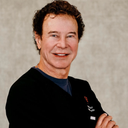Hi Dd,It is a funny thing, but all the studies show no difference between the two shapes teardrop or round in postop studies. I am speaking in China and doing live surgery and all the Chinese surgeons here at the meeting also agree with us in the US that it is no more than marketing hype. Now for your size, I feel you are on the right track. Especially since you are tall.


